 Edit article
Edit articleSeries
Feminist Biblical Interpretation: History and Goals

The Readers, Clara von Rappard, 1886. Wikimedia Commons
What Is Feminist Biblical Interpretation?
At its most basic, feminist biblical interpretation is analysis of biblical texts about women or that deal with matters of concern to women. Because so much of mainstream biblical scholarship, historically, has focused on men and been written by men, the primary motivation for many feminists has been to make sure women are included as more than incidental figures in discussions of the Bible, whether from a historical, a literary, or a theological viewpoint. To state the obvious, although the culture that produced the Hebrew Bible was undoubtedly headed by men, at any given time its population was roughly half female.
Beyond just an interest in women, feminism is also concerned with the relationship between men and women and the differences in power and status that that relationship creates and helps preserve.[1] Ancient Israel, like all societies, was not just a patriarchy in which all men dominated all women. Instead, a variety of social hierarchies existed—what Carol Meyers terms heterarchy (from the Greek heteros, “other, different,” and archein, “to rule”). For example, Sarah might be subservient to her husband Abraham, but she exerts considerable power over Hagar, an enslaved Egyptian woman in her household.
Feminist Interpretation and Political Feminism
Feminism is often equated with a political stance, i.e., the push for women’s equal rights in all areas, but this is only one type of feminism, which cannot be reduced to just one perspective. What all feminisms have in common is the premise that women’s experience as women is relevant. They also share a recognition of the fact that every reader brings biases to the text, whether they are aware of that fact or not: pure objectivity is impossible.
Feminist scholarship does not claim that it provides the only legitimate approach to interpreting texts. Good scholarship tries to take in as many perspectives as it can; like lenses on reality, each perspective has a limited range of vision. If we use multiple lenses, combining the image that each generates, we can begin to create a panorama that more truly reflects the experiences of all people. Which lens we choose to use—which questions we choose to ask of the text—influences the image and the answers we produce.[2]
The Roots of the Feminist Movement
Feminist biblical interpretation has its roots in the larger feminist movement—the two were inseparable in their origins. The early women’s equality movement in the mid-nineteenth century—mainly in the United States but also in Great Britain and elsewhere—was focused on both gender equality and the abolition of slavery, though it eventually made women’s right to vote in elections its central focus.[3]
The exclusion of women from voting was enshrined practice in most countries at the time; in the United States, the extension of voting rights was left to individual states and territories, and although some municipalities allowed women to vote, it was not a right addressed by the Constitution. The suffrage movement took a two-pronged approach, pushing individual states to extend women the vote and simultaneously pushing for a constitutional amendment to give women the franchise nationally.[4]
Use of the Bible in Opposing Feminism
Biblical precedent was cited, often rather vaguely, to support women’s secondary status as part of the “natural order” of the world[5] and to suggest that women could not be entrusted with so great a responsibility as voting. As a result, early advocates for women’s right to vote had to overcome two millennia of biblical interpretation that saw them (not to mention nonwhite people of any gender) as inferior to (white) men, as unequal and undeserving of the same rights of citizenship that they enjoyed.
Elizabeth Cady Stanton and The Woman’s Bible
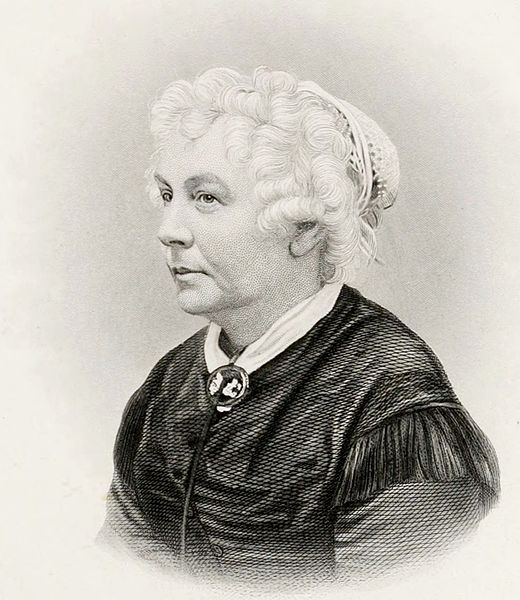
Elizabeth Cady Stanton (1815–1902; New York), an early suffragist and friend and contemporary of Susan B. Anthony (1820–1906; New York), moved boldly on this front when she gathered together a number of women, a few of whom were even aware of contemporary trends in critical biblical interpretation (though barred from formally studying them), to offer their insights on passages pertaining to women in the Bible.
The result was a groundbreaking commentary called The Woman’s Bible, which Stanton edited and for which she wrote many but not all of the contributions. In her introduction to the work, Stanton noted the Bible’s role in women’s historical situation and thus their need to consult it for their liberation:
When, in the early part of the Nineteenth Century, women began to protest against their civil and political degradation, they were referred to the Bible for an answer. When they protested against their unequal position in the church, they were referred to the Bible for an answer.[6]
The readings in The Woman’s Bible were aimed at showing not only where the Bible supported women’s equality but also where it was complicit in their subordination. As a result, its interpretations were not always flattering. Like some modern interpreters (see below), Stanton was an early reader of the creation story in Genesis 1 as depicting equality between the sexes, arguing that
[Genesis 1] plainly show[s] the simultaneous creation of man and woman, and their equal importance in the development of the [human] race. All those theories based on the assumption that man was prior in the creation, have no foundation in Scripture.[7]
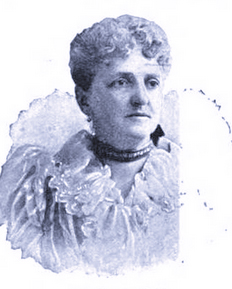
Lillie Devereux Blake (1833–1913), another contributor to the volume, went even further, arguing that in the creation story in Genesis 2, woman is “the crowning glory of the whole”:
It cannot be maintained that woman was inferior to man even if, as asserted in chapter ii, she was created after him without at once admitting that man is inferior to the creeping things, because created after them.[8]
But ultimately Stanton concluded that the biblical portrait of womanhood, which was rife with women acting in underhanded and deceptive ways, was rarely a fitting model for women:
As Sarah did not possess any of the heroic virtues, worthy of our imitation, we need not linger either to praise or blame her characteristics. Neither she nor Abraham deemed it important to speak the truth when any form of tergiversation might serve them. In fact the wives of the patriarchs, all untruthful, and one a kleptomaniac, but illustrate the law, that the cardinal virtues are seldom found in oppressed classes.[9]
Because they were rejecting their own social standing, these early feminists rejected much of the biblical model that they saw as responsible for their status. At the same time, though, they focused positively on those texts that they felt bolstered their own cause (as with Stanton’s reading of Genesis 1).
For example, Stanton saw in Miriam’s challenge of Moses in Numbers 12 a positive role model for women seeking leadership opportunities denied to them by men:
In this narrative we see thus early woman’s desire to take some part in government, though denied all share in its honor and dignity. Miriam, no doubt, saw the humiliating distinctions of sex in the Mosaic code and customs, and longed for the power to make the needed amendments. In criticising the discrepancies in Moses’s character and government, Miriam showed a keen insight into the common principles of equity and individual conduct, and great self-respect and self-assertion in expressing her opinions—qualities most lacking in ordinary women.[10]
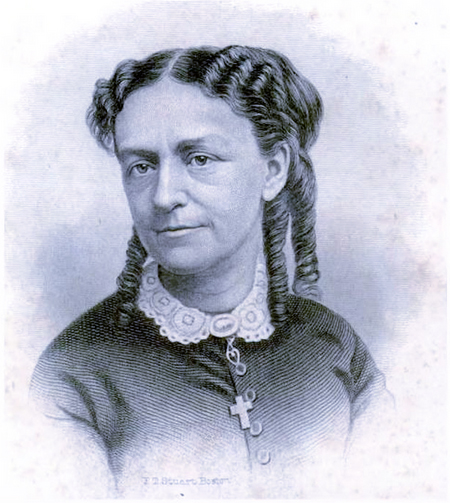
Another early suffragist, the Christian Universalist minister Phebe Hanaford (1829–1921), used a very different biblical text as a negative example. Reading Numbers 30, a text that describes how fathers and husbands can override the vows of their daughters/wives, Hanaford noted the ways in which women are deprived of autonomy and unjustly subject to the authority of men:
Woman is here taught that she is irresponsible. The father or the husband is all. They are wisdom, power, responsibility. But woman is a nonentity if still in her father’s house, or if she has a husband. I object to this teaching. It is unjust to man that he should have the added responsibility of his daughter’s or wife’s word, and it is cruel to woman because the irresponsibility is enslaving in its influence.[11]
Not only was this book an early demonstration of the feminist axiom that “the personal is political,” but it was also one of the first instances of what would become a prevalent aspect of feminist biblical interpretation: the tendency to either reject or reclaim the biblical model for women, and for some interpreters to do both at the same time.[12] As Stanton noted in her introduction to the volume:
The Bible cannot be accepted or rejected as a whole, its teachings are varied and its lessons differ widely from each other. In criticising the peccadilloes of Sarah, Rebecca and Rachel, we would not shadow the virtues of Deborah, Huldah, and Vashti.... The canon law, the Scriptures, the creeds and codes and church discipline of the leading religions bear the impress of fallible man, and not of our ideal great first cause, “the Spirit of all Good,” that set the universe of matter and mind in motion.[13]
Stanton drew considerable pushback. Even in the book’s introduction, she cited the unwillingness of some of the few contemporary women scholars trained in biblical Hebrew and Greek to be involved in the project, “afraid that their high reputation and scholarly attainments might be compromised by taking part in an enterprise that for a time may prove very unpopular.”[14] Likewise, she noted that more religiously conservative women were reluctant to engage in a project that espoused “more liberal views.”
Stanton fought back against charges that it was “more ridiculous” for women than men to offer their own interpretations of the Bible or to look to Scripture rather than the Constitution for arguments about their rights. Susan B. Anthony refused to be involved in the project, not sharing Stanton’s conviction that woman’s legal status was inextricably tied to her religious status.[15] Ultimately, The Woman’s Bible proved controversial enough that the National American Woman Suffrage Association censured Stanton and pushed her to the margins of the suffrage movement.[16]
Feminism Comes in Waves
The ratification of the Nineteenth Amendment, granting women the right to vote, followed shortly after the end of World War I and was followed not long after by the Great Depression and then World War II. The war effort during World War II saw many women go to work and effectively function as the heads of their families in the absence of fathers, husbands, and sons who had gone to Europe and the Pacific.
The postwar period, however, saw a backlash to this temporary liberation, and American society in the 1950s saw an increased emphasis on women’s domestic roles. This restriction of roles set the stage in turn for the renewal of the women’s rights movement, which many trace to the publication of Betty Friedan’s The Feminine Mystique in 1963.[17]
This so-called Second Wave feminist movement gathered steam in the 1970s, and it did not take long for modern biblical interpreters to begin applying newly developed feminist methods to the biblical text. Feminist theological interpretation was again important at this stage, given the place of religion and the Bible in the United States.
Second Wave Feminist Bible Interpretation
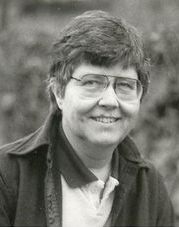
Like Stanton, many feminist interpreters have taken a generally negative view of the Bible. Mary Daly (1928–2010), a self-described “radical lesbian feminist”[18] who taught theology at Boston College, rejected the Bible entirely, deeming it a text without any social value at all, a product of an oppressive patriarchy that could do nothing but perpetuate women’s inequality.
In her discussion of the story of the so-called Fall in Genesis 2–3, for example, Daly notes that attempts to justify the story’s misogyny by citing its mythic nature are “intellectually bankrupt.”[19] Regardless of interpretation, the text cannot be separated from its historical role in women’s oppression: “in the myth of the Fall the medium is the message,”[20] and both message and medium must be rejected if women are to be liberated.[21]
Nevertheless, feminism was not going to succeed without bringing some believers along with it. Scholars like Phyllis Trible (b. 1932), one of the most influential feminist Bible scholars, sought theological readings of the text that redeemed the Bible and God for women.
In her first book, God and the Rhetoric of Sexuality, Trible, like Stanton, argued that far from creating women as subordinate to men, the two sexes were created equal in Genesis 1: at the same time and both “in God’s image.” Further, Trible argued, this mutuality of the sexes is reflected in biblical descriptions of God, which alongside masculine metaphors use feminine and even motherly ones, for example describing God with the term raḥamim, “compassionate,” related to the term reḥem, “womb.”[22]
And yet, even Trible could not deny the Bible’s deeply troubling parts, such as the sacrifice of Jephthah’s daughter in Judges 11 and the rape of Tamar in 2 Samuel 13, which she dubbed “texts of terror” in her second book of the same name.[23]

A pair of articles by another feminist Bible scholar, J. Cheryl Exum (b. 1946), embodies this very tension between positive and negative readings. In the first article, she focuses on the positive and prolific role of women in Exodus 1–2, treating the episode more or less in literary isolation. In a follow-up article written a decade later, though, Exum grapples with the fact that following this episode, the women disappear almost entirely, as the text turns to focus on men through the rest of the pentateuchal narrative. Nevertheless, she notes:
I would still not question [my] conclusions that the women in Exodus 1 and 2 are portrayed positively, that they are active and enterprising, and that their actions are important for the future of the Israelite people.[24]
But a gender-aware analysis of the text in its larger context instead focuses on “how the positive portrayal of women in Exod. 1.8–2.10 nevertheless serves male interests.”[25] In this second essay, Exum concludes that the text exalts women operating in the traditionally female domestic sphere as a way to justify confining them to it.[26] Moreover, the fact that they are clustered in these chapters, working together to achieve a single end, dilutes their influence.[27]
Is Feminist Scholarship Political and Prescriptive?
The general tendencies described above have led to a view of feminist biblical scholarship as either rejecting or reclaiming the Bible for women, for women’s rights, and for women’s history—that is, to view it as either essential to or incompatible with the feminist movement. This contributes to the perception that feminist scholarship is political, subjective, and prescriptive as a method and therefore not scholarly and thus unsuitable for application to historical questions, which should strive for objectivity.
This view—held, in fact, by some feminists and nonfeminists alike—is problematic. First, it assumes that complete objectivity is possible, which is a faulty assumption. Everyone has biases, even if they do their best to compensate for them. Though we may try not to be subjective, that does not mean we are really attaining objectivity.
Second, it assumes that analysis arrived at with some degree of subjectivity is not useful for historical analysis or historical reconstruction. The truth is quite the opposite, however, as approaching a topic or an event from as many angles as possible provides the best overall view.
Moreover, it should be noted that feminist analysis is not limited to female scholars; male scholars have also branched out into feminist interpretation,[28] in addition to focusing on related matters of masculinity and of gender more broadly.[29]
How Feminist Scholarship Helps Us Understand the Text
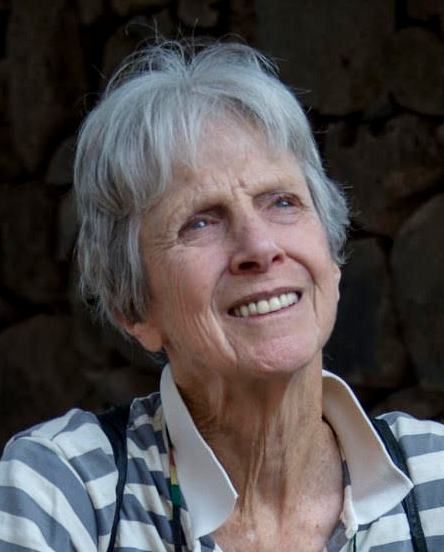
To illustrate feminist criticism, let us look at a few examples. One particularly fruitful avenue of feminist historical interpretation has been reconstructing the parameters of ancient Israelite society using sociological and anthropological tools. Carol Meyers, for example, uses archaeological data and social-scientific methods alongside textual readings to create a better understanding of ancient Israelite social structures, especially in the earlier (Iron I/II) periods (corresponding to the period from about 1200 B.C.E. until 586 B.C.E.).[30]
As Meyers’s research demonstrates, household archaeology sheds new light on the role of women in subsistence societies like early Israel was. Women’s vital involvement in the household economy shows that women in rural Iron Age Israel came about as close to parity with men as it is generally possible to come.[31]
Punishment of Eve
Meyers takes a particularly close look at Genesis 3:16. The NJPS translation, which is typical here, reads:
אֶל הָאִשָּׁה אָמַר
הַרְבָּה אַרְבֶּה
עִצְּבוֹנֵךְ וְהֵרֹנֵךְ
בְּעֶצֶב תֵּלְדִי בָנִים
וְאֶל אִישֵׁךְ תְּשׁוּקָתֵךְ
וְהוּא יִמְשָׁל בָּךְ.
And to the woman He said,
“I will make most severe
Your pangs in childbearing;
In pain shall you bear children.
Yet your urge shall be for your husband,
And he shall rule over you.”
As Meyers notes, “No single verse of the Hebrew Bible is more troubling for issues of gender relations and women’s roles than Genesis 3:16,” which has traditionally been interpreted to mean that women should suffer pain in childbirth and subordination to men as punishment for the first woman’s role in eating the fruit of the tree of knowledge of good and evil.[32] The focus in such readings is on the idea that the woman is “cursed” (a term that does not appear in the verse) and given a “punishment” that is proportionately greater than the punishment meted out to the man, in accord with her supposedly greater role in the transgression.
Meyers, however, reads this passage as an etiological tale (a tale of explanation) that describes the life of Israelite peasants in a subsistence economy—which, she notes, is standard in interpretations of the verses addressed to the man (vv. 17–19), though it is generally missing from readings of the verse about the woman.[33] (Note, too, that v. 17 does contain the word “cursed,” arurah—the earth is cursed as a result of the man’s behavior.)
Meyers argues that the grammar and vocabulary show that the first part of the verse means, “Women out of Eden will work hard and also have many pregnancies. God is mandating woman’s role in production and reproduction.”[34] This is much more in line with readings of vv. 17–19 that focus on the man’s toil and difficulty in living an agrarian lifestyle.
The second half of the verse is an effort to encourage and control reproduction in a society where women might otherwise be reluctant to give birth, given the high mortality rates for infants and for women.[35] Using philological, archaeological, and sociological evidence, Meyers proposes the following translation for Genesis 3:16:
I will make great your toil and many your pregnancies;
with hardship shall you have children.
Your turning is to your man/husband,
and he shall rule/control you [sexually].
The woman is not singled out for having played a greater role in the episode, nor is the outcome for her significantly more odious than is the one for the man. Instead, men and women share responsibilities for their own subsistence and for human reproduction, despite women’s potential reluctance given the risks of childbearing; both will have to work hard, and each will have a particular area of dominance, though on the whole men will have more dominance over women than vice versa.
Decalogue for Men
In addition to texts that specifically mention women, feminist analysis can also provide new context and understanding where women are notably absent, as in many of the biblical laws. Athalya Brenner has noted that many of these laws are spoken to a male addressee.[36] Masculine grammatical forms can be used as a “default” in Hebrew, meaning that they are used in some cases that also include women. However, some notable cases are problematic:
שמות יט:טו וַיֹּאמֶר אֶל הָעָם הֱיוּ נְכֹנִים לִשְׁלֹשֶׁת יָמִים אַל תִּגְּשׁוּ אֶל אִשָּׁה.
Exod 19:15 And he said to the people, “Be ready for the third day: do not go near a woman.”
This verse, part of the instructions addressed to the Israelites (העם) as they prepare to receive the revelation at Sinai, would seem to address the entire people, yet the text makes clear that only men are addressed when it cautions its addressees against going near a woman.[37]
Another example, from the tenth commandment of the Decalogue, likewise assumes a male addressee when it includes the neighbor’s wife among possessions of the neighbor’s not to be coveted (and, of course, it also lists the wife as a possession):
שמות כ:יז לֹא תַחְמֹד בֵּית רֵעֶךָ לֹא תַחְמֹד אֵשֶׁת רֵעֶךָ וְעַבְדּוֹ וַאֲמָתוֹ וְשׁוֹרוֹ וַחֲמֹרוֹ וְכֹל אֲשֶׁר לְרֵעֶךָ.
Exod 20:17 You shall not covet your neighbor’s house: you shall not covet your neighbor’s wife, or his male or female slave, or his ox or his ass, or anything that is your neighbor’s.
Indeed, all of the Ten Commandments are addressed to grammatically masculine subjects.
It is safe to assume that women were not generally exempt from most of these laws: they were not allowed to murder or to steal, despite that fact that these laws are addressed to men. Nevertheless, reading the text with an eye to gender in these cases makes clear that the biblical author’s default Israelite here, and in many other cases, is a man, not a woman.
David Clines makes a similar observation, noting that the Decalogue law here is decidedly serving the interests of men. Though Clines does not set out explicitly to do feminist analysis, he arrives there by asking questions about the interests behind the text, just as feminist analysis does.[38]
Feminist Bible Interpretation: Where from Here?
The important challenge posed by feminist biblical interpretation is: What we do with the gender bias in the text?
We can read generously and conclude that though the addressee is male, numerous other cases make clear that women are included in one way or another in the biblical authors’ concepts of who constitutes the nation of Israel. Or we can read with a “hermeneutics of suspicion,”[39] recognizing that there are places in the Bible that are problematic for women, where women are not in view and where their concerns are made secondary to the concerns of men. Or, we can assimilate this new information into our understanding of the biblical text and its authors, without attaching a value to it for modern politics and theologies but as one more tool to be used in historical reconstruction.
Feminist biblical interpretation is about broadening our view on the historical text and the people who produced it.
TheTorah.com is a 501(c)(3) nonprofit organization.
We rely on the support of readers like you. Please support us.
Published
October 29, 2019
|
Last Updated
December 13, 2025
Previous in the Series
Next in the Series
Before you continue...
Thank you to all our readers who offered their year-end support.
Please help TheTorah.com get off to a strong start in 2025.
Footnotes

Dr. Sarah Shectman is a freelance academic editor. She holds a Ph.D. and M.A. in Bible and Ancient Near East from Brandeis University, is the author of Women in the Pentateuch: A Feminist and Source-Critical Analysis, and co-editor (with Joel S. Baden) of The Strata of the Priestly Writings: Contemporary Debate and Future Directions.
Essays on Related Topics:









